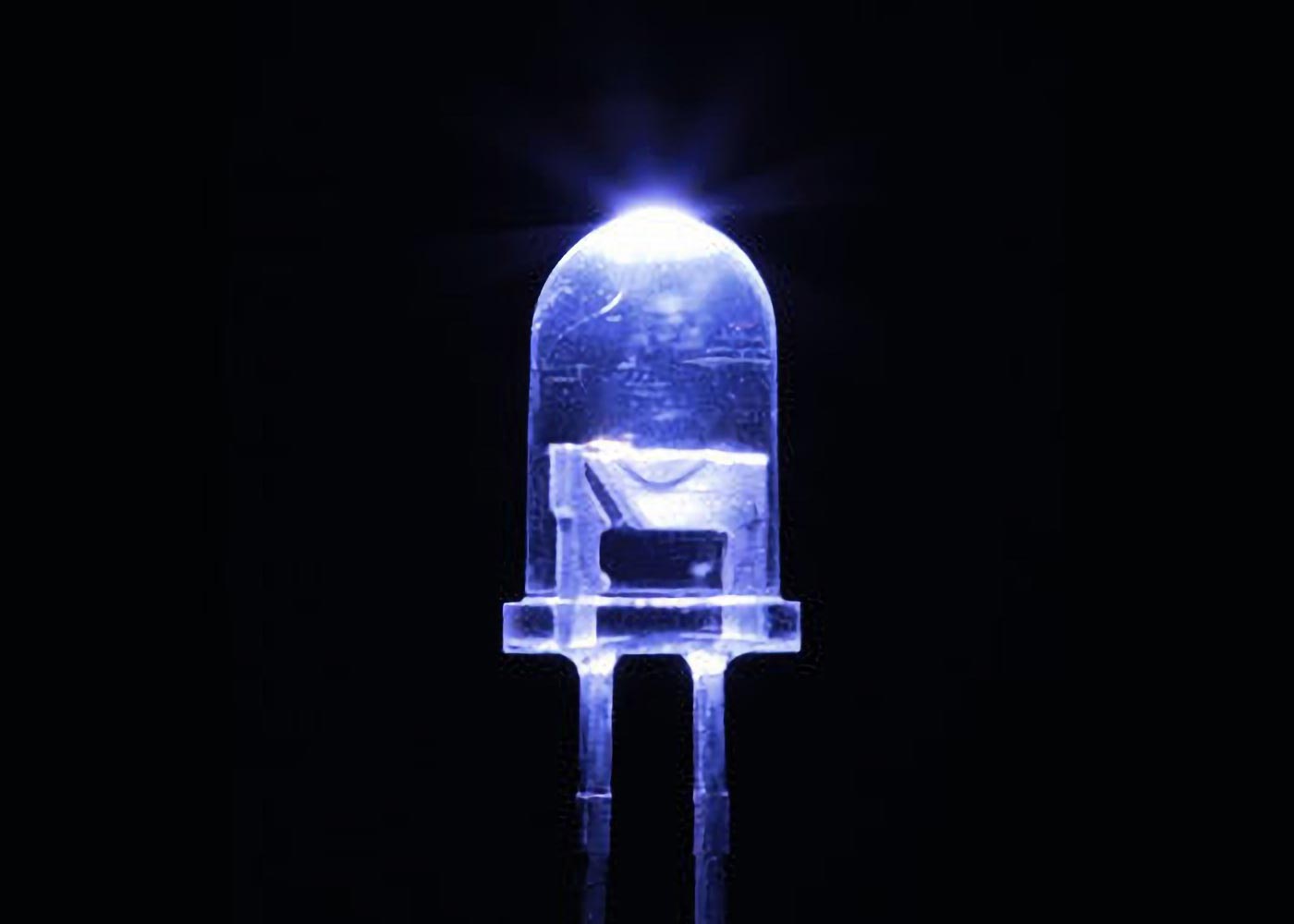
Фигура 1: Повечето светодиоди излъчват видима светлина, но физиците от RIKEN са създали светодиод, който излъчва в тесен регион в далечни ултравиолетови лъчи и е безопасен за хората, но фатален за вируси и бактерии. кредит: RIKEN
Мощна LED лампа може ефективно да дезинфекцира повърхности, като същевременно предпазва хората.
Физиците от RIKEN са проектирали високоефективна LED лампа, която е антимикробна и антивирусна, но безопасна за хората. Един ден може да помогне на страните да излязат от сенките на епидемиите, като убиват патогени в стаи, пълни с хора.
Ултравиолетовите бактерицидни лампи са много ефективни при убиване на бактерии и вируси. Всъщност те се използват рутинно в болниците за стерилизиране на медицински повърхности и инструменти.

Масафуми Джо и двама колеги са проектирали LED лампа, която помага за защита на обществото от епидемии. кредит: RIKEN
Лампи от този тип могат да бъдат създадени с помощта на светодиоди, което ги прави енергийно ефективни. Тези LED светлини обаче произвеждат ултравиолетова светлина в диапазон, който е вреден[{“ attribute=““>DNA and therefore cannot be used around people. The search is on to develop efficient LEDs that shine light within a narrow band of far-ultraviolet light that appears to be both good at disinfecting while remaining safe for people.
Germicidal LED lamps that operate in the absence of humans are often made from aluminum, gallium, and nitrogen. By increasing the amount of aluminum they contain, these LEDs can be modified to work in a wavelength region that is safe for humans. This approach has been used before but has resulted in dramatically reduced power.
To work through this issue, three physicists at RIKEN Quantum Optodevice Laboratory, Masafumi Jo, Yuri Itokazu, and Hideki Hirayama, created an LED with a more complex design. They sandwiched together multiple layers, each containing slightly different proportions of aluminum. In addition, in some layers they also added tiny amounts of silicon or magnesium.
This effectively created an obstacle course for electrons, hindering their movement across the material and trapping them for longer in certain areas. This resulted in an increased amount of light emitted by the device and a reduced amount absorbed by it.
The team used computer simulations to model all possible effects to help pin down the ideal design. “We then grew samples to see if it was effective or not,” Jo says. Precisely controlling the thickness of each layer was the biggest experimental challenge. They ended up with an LED operating in the far ultraviolet, with an output power almost ten times higher than their previous best.
The COVID-19 pandemic brought a new consciousness of the importance of being able to eradicate viruses and microbes on surfaces. “We trust that our findings and technologies will be very useful for safeguarding society against this and future pandemics,” says Jo.
Jo adds that the trio will strive to improve their LED’s performance even further. “There’s still much room for improvement in the output power and the power efficiency,” he notes.
Reference: “Milliwatt-power far-UVC AlGaN LEDs on sapphire substrates” by Masafumi Jo, Yuri Itokazu and Hideki Hirayama, 25 May 2022, Applied Physics Letters.
DOI: 10.1063/5.0088454

„Тотален фен на Twitter. Нежно очарователен почитател на бекона. Сертифициран специалист по интернет.“





More Stories
„Треска на ленивец“ или Оровирус навлезе в Съединените щати от Куба – ето какво трябва да знаете
Идентични следи от стъпки на динозаври открити на два континента
Най-мощният телескоп на Земята заснема изображения на черни дупки с безпрецедентни детайли